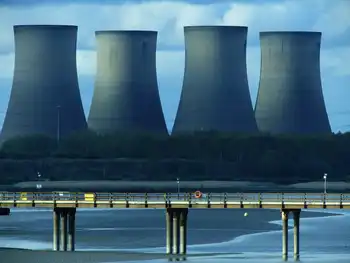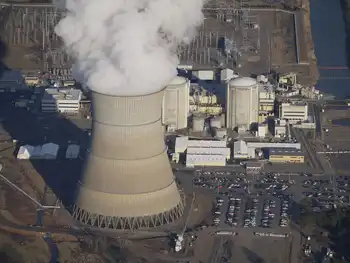Two area lakes integral to power generating idea
By Cobourg Daily Star
Substation Relay Protection Training
Our customized live online or in‑person group training can be delivered to your staff at your location.

- Live Online
- 12 hours Instructor-led
- Group Training Available
Harry Valentine, 48, of Cornwall, Ont., is promoting construction of a "pipeline or tunnel" between the two lakes. Lake Ontario is 368 feet below the surface of Rice Lake, he stated, and this is the key to his "pumped storage hydraulics" solution to Ontario's need for more power.
Essentially, water from Lake Ontario would be pumped up to Rice Lake during the night when the need and cost of power is lowest. It would make Rice Lake rise by a foot. When power is needed by 6 a.m. the next day and the demand raises the cost of power, the water would flow downhill through the same pumps, which now become turbines generating electricity to be added to the power grid. Rice Lake would return to its previous level, Mr. Valentine said.
"It may be possible to generate up to 1,000 megawatts of electric power for two cycles of four hours each during the morning and evening, when demand for electricity is at its peak," Mr. Valentine wrote in an e-mail outlining the project.
A technical article Mr. Valentine said he is preparing for the Ontario Waterpower Association - an advocacy group for Ontario's waterpower industry and headquartered in Toronto - will outline how this 20-kilometre pipeline or tunnel could be created on the east side of Port Hope and the east side of Bewdley. It could be closer to Cobourg, however, he noted. He chose the Port Hope illustration because it is the closest distance to link the two lakes.
If the project were to go forward, the pipe would go "wherever it is possible to negotiate land," he said.
There is one such facility at Niagara Falls, Mr. Valentine said in a recent interview, but many in the U.S. are using this system creating about 23,000 MW of power, in fact, more than Ontario's current power capacity.
Mr. Valentine said he has contacted the offices of Port Hope Mayor Linda Thompson, Northumberland-Quinte West MPP Lou Rinaldi, and the Northumberland Central Chamber of Commerce.
Mr. Rinaldi said his office receives a lot of advice about how to achieve different things and he was unaware of this particular proposal.
The environmental impact of lowering and raising water levels is an issue that Mr. Rinaldi immediately flagged. Rice Lake is already controlled through the Trent system, he added.
"This sounds like a pie in the sky project," he said. But, he added, it could be of value.
Chamber manager Kevin Ward said he was investigating the information Mr. Valentine provided to the chamber.
Mayor Thompson has been unavailable to comment and Hamilton Township Mayor Mark Lovshin was unaware of Mr. Valentine's proposal. Several township councillors at the council meeting were surprised by the idea and Coun. Pat McCourt predicted there would be quite a response by township residents to such an idea.
Cobourg Mayor Peter Delanty, a member of the Great Lakes mayors' organization, expressed concern about piping water out of any of the Great Lakes. Water diversion is one of the group's major issues. But, he added, "I'd really have to look at it."
No information had been provided to his office about Mr. Valentine's proposal, Mayor Delanty said.











